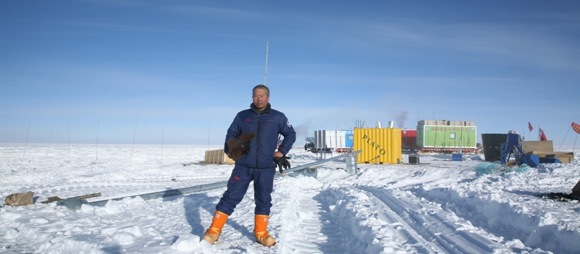If you can’t afford to send a telescope to space, you’ll want the next best thing; a location on Earth which is cold, dry and at a high altitude. Perhaps the best place on Earth is “Dome A”, a high altitude region in Antarctica – the coldest and driest place on Earth. A team of astronomers recently climbed the summit of Dome A, and installed a new robotic observatory that should see some amazingly clear skies.
The team of scientists that made the journey represents 6 international institutions, including Texas A&M University and the Polar Research Institute of China. They arrived at Dome A on January 11th, in the middle of the southern Summer, and completed the facility installation on Saturday.
The installation is called the PLATeau Observatory, or PLATO, and was built by the University of New South Wales in Australia. PLATO is equipped with a suite of instruments that will let it measure the quality of the conditions, to confirm that it really has the best seeing on Earth. But if the calculations are correct, a 2 metre telescope here would be the equivalent of an 8-metre telescope built somewhere else. And an 8-metre telescope would rival the 30-metre supertelescopes in the works at various locations around the world.
One of the most important instruments is a set of four telescopes built at Purple Mountain Observatory in Nanjing. These are 4 telescopes with 14.5-centimetre apertures. Each one is equipped with a different filter to view the night sky at a different color or wavelength.
The facility is powered by six diesel engines that use aviation fuel in the Winter, and then it switches over to solar energy in the Summer. It will be completely autonomous, operated remotely over the low-bandwidth Iridium satellite service. Workers will then pick up the bulk of its research at the annual servicing visits.
Even in the dead of Winter, where temperatures plunge to -82 degrees Celsius, the facility will be working away gathering images. That’s because the weather around Dome A is very calm and stable. You don’t get the ferocious storms here that you see in other parts of Antarctica. It’s just cold and calm.
With PLATO installed, the team turned around and left the region on a convey of snow tractors. They’ll travel non-stop for 18 days to the coast of Antarctica, and then back to civilization.
Original Source: Texas A&M University News Release


They need more telescopes like this one. It is only a matter of funding.
One thing space has on this telescope is that it doesn’t have the bands of the electromagnetic spectrum blocked out by the atmosphere.
From the picture, it appears as though the sky isn’t _that_ clear all the time…
Oh gosh, Oh gee…
Real high science:
Tell them to look down.
Now tell them to look up.
Driest place on earth, clearest skies.
Now think: Are they in the wrong place or is it the wrong picture?
…but if it is ‘completely autonomous’ noone will know it exists!